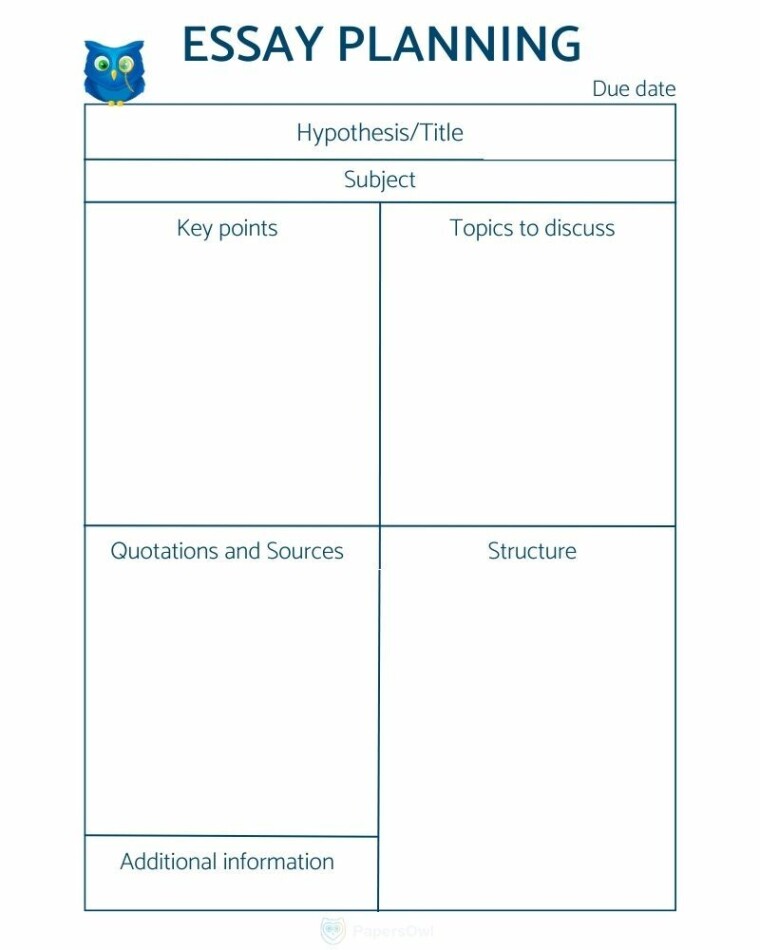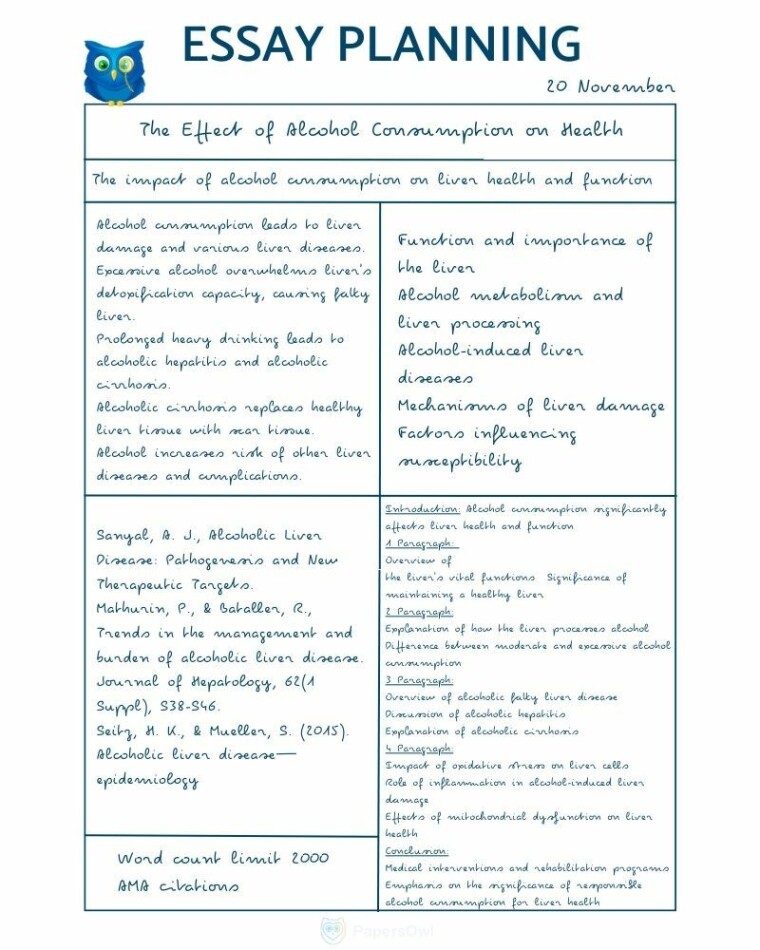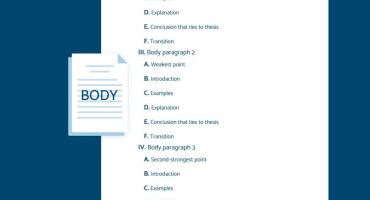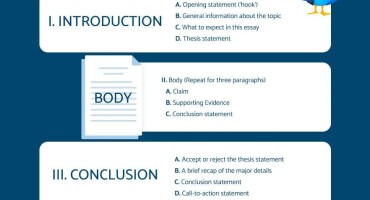Essay Planning: The Key Elements of Effective Essay Writing
Table of contents
Before getting to the writing process, you must think about an essay plan structure. The essay plan is drawn up to rebuild the stream of thoughts into coherent, logically combined sentences. Immediately after receiving the topic of the essay, ideas, and images will start appearing in your mind. Sketch out the phrases or words that come to mind on a draft sheet, they can be developed for the whole task. If you want to make an assignment well that will be worth an A-level grade, use these recommendations from our essay writing guide at PapersOwl.com to create the finest essays.
Keynotes:
- In this piece, you get to learn Essay planning plus organizing and structuring the content and flow of it.
- You will find out how essay planning helps to clarify the main idea and argument.
- You also understand the structure of an essay plan constituents.
- The introduction, main body, conclusion, and references will also be discussed.
Basic Parts of An Essay
While the most basic form of your essay is the opening, body, and conclusion, breaking it down further helps to make the writing process more straightforward. This allows you to write down the main points that need to be made throughout the writing. Understanding each section of the paper means presenting a well-thought-out and coherent end product. For these reasons, using an essay outline helps the writer and reader. Follow along as we demystify how to structure an essay template and give you tips.
Introduction
A detailed thesis structure plan is crucial in writing an academic essay introduction. It helps to grasp the audience’s attention and guide the author’s writing. In essay planning, a well-written introduction follows the proper form and pays attention to detail. A good introduction paragraph helps focus the essay question and ideas and presents the paper’s topic in a single sentence. This makes it valuable for projects and research papers assigned to students.
Additionally, it will help focus your ideas at the beginning of a big assignment. A basic structure of essay works for various projects, texts, and research papers.
Importance of Hook
A hook is the first line of your paper intended to encourage your audience to read on and get their answer. It is among the key points of the opening ideas and is easy to learn. You can get a great hook by keeping a definite stance in your coherent argument, sensationalism, or stating an intriguing fact from the beginning. It keeps the reader entertained and eager to learn more from the paper you develop.
Thesis Statement
Simply put, the good thesis statement is the core sentence of your essay. It’s one of the essential components of an essay of all kinds. You can find it in a standard essay format of your essay plan at the beginning of the piece. For example, it could be resuming general points of the analysis, answering a “how to” answer the question, or just suggesting powerful ideas or useful tips.
Body Paragraphs
The essay’s thesis is backed up by the work’s body paragraphs. A standard body paragraph starts with a topic sentence, followed by supporting sentences, and ends with a conclusion. It sticks to one topic and connects to the other paragraphs.
Topic Sentence
The viewpoint is an information-packed section that throws a challenge at readers and requires a logical structure. This is where a detailed plan of the topic sentence comes in.
A topic sentence introduces the ideas you brainstorm, provides evidence, and concludes the topic in a condensed paragraph. This statement logically organizes the information, ensuring the reader understands the topic.
Your Points and Arguments
This will vary depending on what type of paper you are writing. If penning an expository job, a persuasive argument, or an argumentative academic essay, you will be doing lots of research and formulating your response to the responses you’re reading from professors and academics. This is the section where you state your position on an issue or its significance in world history and the points to substantiate your main argument to your audience.
Concluding Sentence
A concluding sentence in essay planning is the last sentence of a paragraph that summarizes the main idea and connects it to the rest of the essay. It should also signal the reader that the paragraph is ending and prepare them for the next one. Here are some tips for writing a good concluding sentence:
- Restate the main idea of the paragraph in different words from the topic sentence.
- Use a transition word or phrase to show how the paragraph relates to the previous or next one.
- End with a strong statement that leaves an impression on the reader. You can use an essay question, a quote, a call to action, etc.
Conclusion
The conclusion is the final section of an essay in that the essay’s conclusion helps the reader recall the important points and decide the end point of the essay. Each main point in your essay plan should be reduced to a statement in the last paragraph. This means that a three-point text will produce a template of three sentences for the conclusion. It gives readers a sense of completion by closing the work with a strong challenge and uniform writing conclusion across the entire essay.
- Free unlimited checks
- All common file formats
- Accurate results
- Intuitive interface

Types of Essay Structure
A structure is important for organizing your essay question and ideas in a proper logical structure. They help you present your topic, provide background information, give your thesis statement, support your claims with evidence and show why your argument matters. Different academic essay structures can suit different types of topics, purposes, and audiences.
For instance, if you employ a student’s essay writer online, they can use a chronological essay plan to show the cause and effect of events over time. At the same time, you use a compare-and-contrast structure to highlight the similarities and differences between two or more subjects. Choosing an appropriate essay structure can help engage your readers and support your argument.
Compare and contrast
In this basic essay structure, you write about several subjects, such as historical events, themes, or novels. As the name suggests, you then spend a passage comparing the subjects of your essay and the following passage contrasting them against each other. For example, the first body passage may discuss a novel’s similarity with another book in how they deal with the theme of marriage.
While the next section will illustrate how they differ in their discussion of country versus city life, the last portion highlights if they’re more comparable than not. It’s a very common format for a college essay or thesis.
Chronological
The chronological format follows a timeline or sequence of events from beginning to end. Perfect for a history and process essay, or a book from the prologue to the epilogue, it’s also a standard essay format for cause-and-effect pieces. It’s an easy method to follow and has a very basic essay structure. First, you outline your topic and points of the timeline you will be touching on in order of appearance.
After, each paragraph will deal with a particular place in the timeline, then move on to the next, according to what happened first. For example, you could analyze an initial historical skirmish. The following paragraph will deal with the ensuing battle, which eventually led to the declaration of all-out war. Write beginning from the first instance to the last in order of what happened first.
Problems-methods-solutions structure
The problems-methods-solutions example is valuable for essays dealing with resolving a particular problem or for a scientific research paper. It divides the body into three relevant headings: a problem, ways to resolve the problem the solution achieved by using these strategies to resolve the problem.
In the opening, you explain the problem you’re attempting to solve in the essay, provide an outline of the experiment or ask a how-to question. The following paragraphs in the paper will discuss methods of solving the problem and any solutions.
As the final section will deal with multiple solutions, you can emphasize the answer you believe is the most useful. An analysis can also be added here with a summary where you compare the various options. Though it might not be the most basic essay construction, it’s a great solution for an argumentative essay where you want to prove your thesis backed by consistent analysis.

Stages of Good Essay Organization
Understand your Topic
The first stage of a good organization is to understand your topic well. This means that you need to do some preliminary research and find the essay question or problem you want to address in your essay. You must also consider the essay plan’s purpose, audience, and tone. What are you trying to achieve with your essay? Who are you writing an essay for? How do you want to sound? What is the marking criteria for the assignment? These factors will influence and decide the type and level of information you must include in your essay.
Take Keynotes
The second stage in essay planning is to take keynotes of the relevant information you find in your research. This is like making a mind map, a mind map of your essay template. It is essential that, while writing your assignments, you familiarize yourself with the topic and take concise notes. You must select and record the essential information, facts, arguments, and evidence related to your topic and research question. You also need to use your own words and avoid plagiarism.
Effective note-taking helps you synthesize information, capture key points, and remember important details. Employ a structured approach, such as a closed question, bullet points, or headings, to categorize your notes, making and not going over the word limit.
Group Similar Ideas
The third stage of a good organization is to group similar ideas and label them with keywords or phrases. To deliver a great job plan to your clients who have been paying for papers from you, you must look for patterns and connections among your notes. See how they relate to your topic and essay question. You also need to identify the main argument that you want to make in your essay. Also, group similar ideas together, like you would in a mind map, and label them with keywords or phrases that describe their content. This will help you organize your initial thoughts and build the structure of your essay.
Note Down Sources of Further Information
The fourth stage of a good organization is to note down sources of further information you decide to use in your essay. This means you may need more evidence or examples to support your points or explore some aspects of your topic more deeply. You must also list the sources you plan to consult for the work.
To note down sources of further information, you should review your notes and identify any gaps or weaknesses. Ensure you list the sources you plan to use in your essay and their bibliographic details, and evaluate each source based on its credibility.
Outline What You Will Include in Each Section
The fifth stage outlines what you will include in each section when writing your essay. This means you must decide on the order and transitions between sections. Your outline should include the following parts:
An introduction that introduces your topic and provides background information. It will also state your thesis statement and outline the main point of your essay
A main body that develops your main points and sub-points in paragraphs, using evidence and examples to build a coherent argument. It should also help in drafting an answer to your essay question.
A conclusion that will summarise your endpoint, restates your thesis statement, and shows why your main argument matters.
Write a Draft
The sixth stage is to write a draft of the essay based on your outline plan. This means that you must write in complete sentences and paragraphs and follow the conventions of academic writing. You must also use clear, precise language and avoid grammar and spelling errors.
Ensure you cite your sources properly using the required citation style. To write the first draft of your essay, follow your outline as a guide and write your essay from start to finish. Clear and precise language should be a given; avoid jargon, slang, or vague words. Carry out grammar and spelling checkers to correct any errors and build your writing.
Figure out a Word Count
The final stage in the essay writing process is to decide how many words are appropriate. You may need to add or delete from the total word count to adjust the length. You also need to check the quality and clarity of your writing and make revisions to the essay plan. To determine a word count plan, you should use a word processor or an online tool to count the number of words in your essay. Get feedback on the quality and clarity of your writing, and make revisions as needed to improve your essay writing.
How to Plan an Essay

Title/Hypothesis
Begin by establishing a clear and captivating title. The title should glimpse your piece’s main focus or argument. Also, if required, formulate an essay question or thesis statement that succinctly paves the way for your main body paragraphs.
Subject
Identify the essay topic that your essay will address. Whether it is a literary analysis, a scientific inquiry, or a historical exploration, clearly define the subject to maintain a focused and cohesive approach throughout your essay.
Due Date
After getting the essay topic, know the due date for your essay. This will help you establish a realistic timeline and allocate sufficient research plan, essay writing, and revising time.
Keynotes
Conduct thorough research on your chosen subject and take concise and relevant notes. Capture key points, essential facts, and significant elements from various sources. organize your notes structured, employing headings or categories to facilitate easy navigation during the writing process.
Ideas to Discuss
Based on your brainstorming sessions, research, and keynotes, identify the main ideas and outline how many words are enough for each. These ideas should align with your thesis statement and should develop a coherent argument.
Quotations
If appropriate to your essay’s subject and style, cite relevant quotations from reputable sources to support your arguments. Select quotes that directly contribute to your analysis or provide valuable insights. Remember to attribute the quotes to their original authors properly and include accurate citations in your plan.
Sources
Note down the sources you have consulted during your research that helped to answer the question of the essay. This includes books, articles, scholarly journals, websites, and other relevant materials you can cite. Ensure you gather all necessary bibliographic information, such as author names, publication titles, publication dates, and page numbers, to create accurate citations and a comprehensive bibliography later.
Outline/Structure
Moreover, create an outline or layout for your essay. Organize and summarise the ideas you brainstorm into sections and subsections in the essay plan (like a mind map), establishing the structure and flow in drafting your essay.
Additional Information
Consider any additional information and elements relevant to your essay before you start writing. This may include specific formatting requirements, referencing styles, marking criteria, or word count provided by your instructor or institution.
An Example of Using a Template







